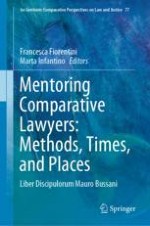This volume features papers written in honor of Mauro Bussani, and celebrates the work and contributions of this renowned scholar of comparative law. The content reflects the various theoretical and practical areas in which he has already left a lasting mark.
The essays explore the theory and practice of comparative law in different areas and contexts, and highlight innovative approaches to a large variety of hot-topic private and public law subjects. The authors include young scholars, lawyers, legal consultants, human rights activists, and practitioners, all of whom Professor Bussani has trained, supervised, and supported throughout their careers.
The contributions emphasize the many ways in which Professor Bussani’s teaching and scientific output have enriched, revolutionized, and challenged both theory and practice. They cover e.g. the law of secured transactions, Western law and legal pluralism, fashion law, contract law in China and in the Arab World, contract and tort in the West, scientific evidence, risk regulation, global finance, human rights indicators, anti-discrimination laws, democracy and climate change law.
